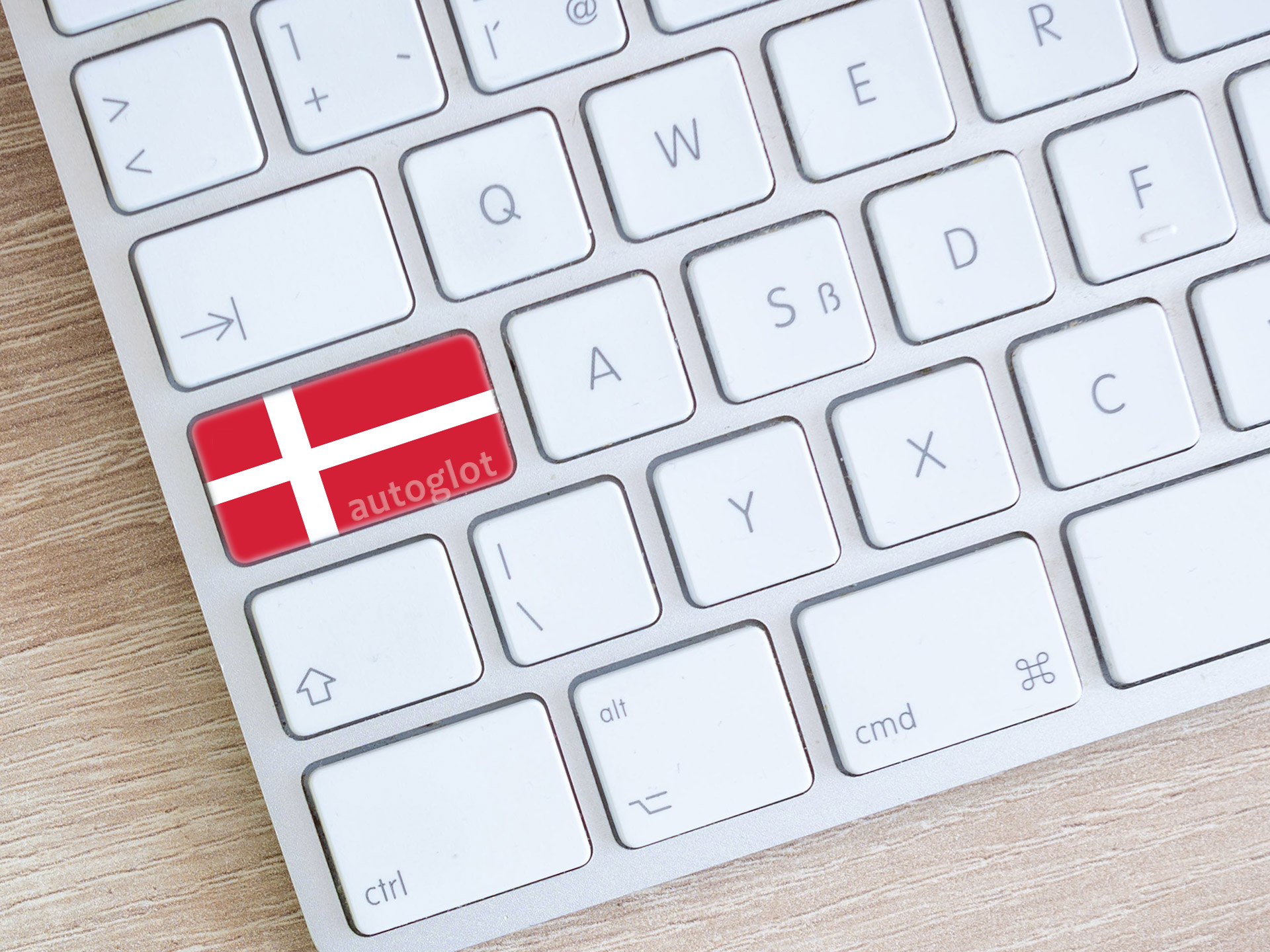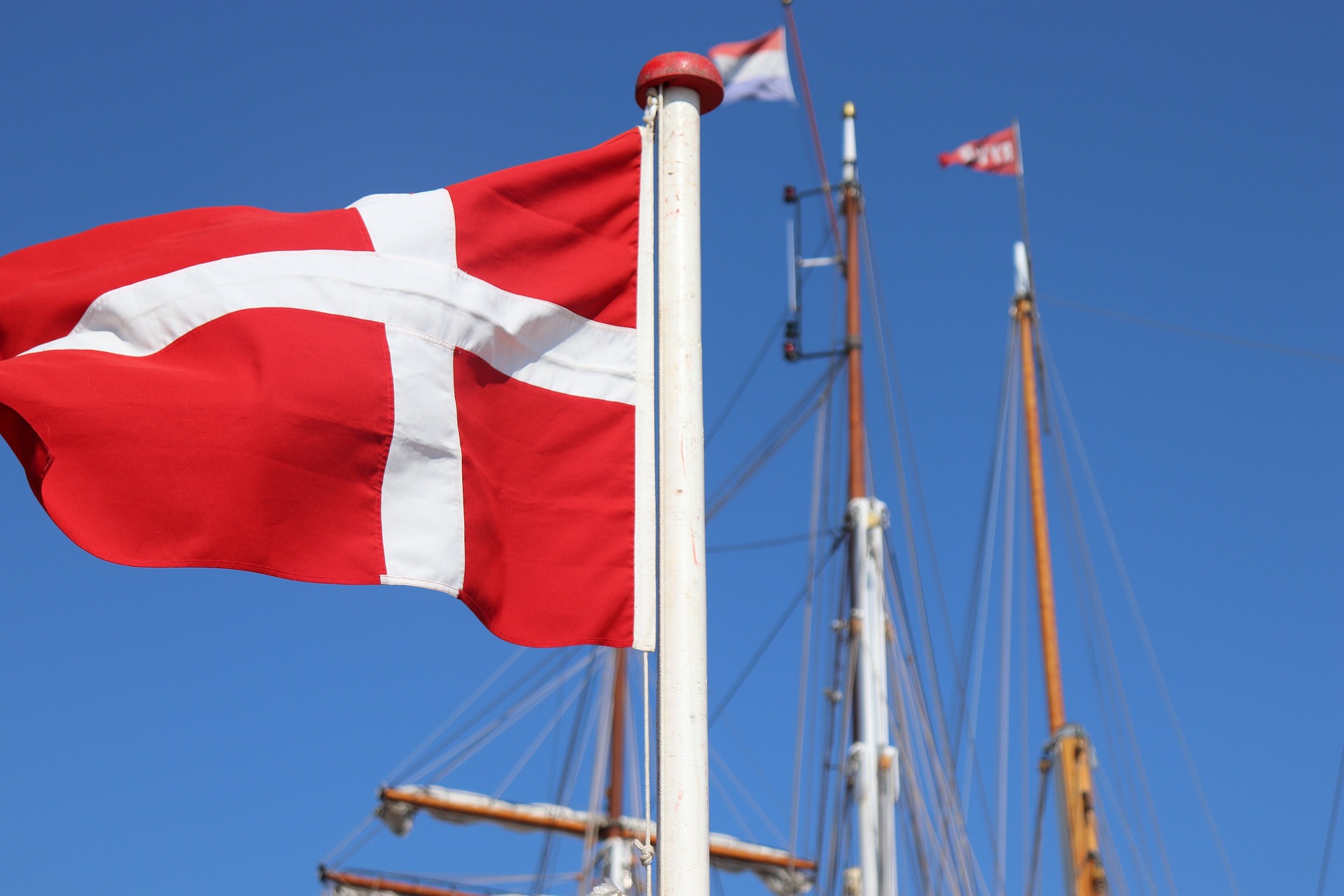
Çok dilli web sitelerinin önemi abartılamaz. Küresel pazarın katlanarak genişlemesi ile, işletmeler ve bireyler, kendi dillerinde izleyicilere ulaşmanın muazzam faydalarını kabul etmektedir.
Çok dilli web siteleri oluşturma bağlamında önemli önem taşıyan bir dil Danca'dır.
Çok dilli web sitelerine giriş ve Danca'ya çevirisi
Kuzey Cermen dili olan Danca, dünya çapında yaklaşık 6 milyon kişi tarafından konuşuluyor. Öncelikle Danimarka'da kullanılırken, Faroe Adaları ve Grönland'da resmi statüye sahiptir ve bu bölgelerdeki izleyicilerle etkileşime geçmek isteyenler için anahtar bir dil haline gelir.
Danimarka dili, Viking Çağı'na dayanan zengin bir tarihe sahiptir. Yüzyıllar boyunca, eşsiz fonolojisi, kelime bilgisi ve dilbilgisi ile karakterize edilen farklı bir dilsel varlığa dönüştü. Danca, karmaşık sesli harf sesleri ve bükülme morfolojisi nedeniyle anadili olmayan konuşmacılara bazı zorluklar yaratırken, nispeten basit sözdizimi ve dilbilgisi öğrenmeyi erişilebilir bir dil haline getirir.
Danimarkalı konuşan pazara girmek isteyen işletmeler ve bireyler için, Danimarkalı yerel bir web sitesine sahip olmak çok önemlidir. Sadece Danimarkalı konuşan izleyicilere hizmet etme taahhüdünü göstermekle kalmaz, aynı zamanda kullanıcı deneyimini geliştirir ve güven ve güvenilirliği teşvik eder.
Ayrıca, Danimarka içeriğinin internette artan yaygınlığı ile, web sitenizin Danimarkalı bir sürümüne sahip olmak çevrimiçi erişiminizi önemli ölçüde genişletebilir. İster çokuluslu bir şirket ya da uluslararası alanda genişlemek isteyen küçük bir işletme olun, WordPress sitenizi Danimarka'ya dönüştürmek, büyüme ve başarı için bir fırsat dünyası açar.
Bu makale, bir WordPress sitesini Dancaya çevirme sürecini inceliyor ve bu süreçteki yararları ve zorlukları vurguluyor. Ayrıca, çeviri sürecini otomatikleştirmek ve web sitenizin Danimarkalı izleyicilere etkili bir şekilde konuşmasını sağlamak için kesintisiz bir çözüm sunan güçlü bir araç olan Autoglot WordPress çeviri eklentisi de sunacağız. Öyleyse, Danimarkalı çeviri dünyasına girelim ve Danimarka konuşan pazarda WordPress sitenizin tam potansiyelini nasıl açabileceğinizi keşfedelim.
Danimarka dili
Cermen dillerinin Kuzey Cermen şubesinin bir üyesi olan Danca, dilsel meslektaşları arasında eşsiz bir konuma sahiptir. Kökleri İskandinav tarihine derinden gömülü ile Danimarka yüzyıllar boyunca hem farklı hem de büyüleyici bir dile dönüştü.

Danimarka Dili Tarihi
Danimarka dilinin tarihi, 8. ila 11. yüzyıllarda Viking Çağı'na kadar uzanabilir. Bu süre zarfında, Danimarkalı, Norveççe ve İsveç dahil olmak üzere modern İskandinav dillerinin öncüsü olan Eski İskandinav İskandinav bölgesinde konuşuldu. İskandinav yerleşimcileri bölgeye yayıldıkça, dilleri yavaş yavaş şimdi Danca olarak tanıdığımız şeye dönüştü.
Ortaçağ boyunca Danca, komşu diller ve lehçelerle temastan etkilenen önemli değişiklikler geçirdi. Hıristiyanlığın tanıtımı ve Latin senaryosunun benimsenmesi, dili daha da şekillendirerek orta Danca'nın gelişimine yol açtı.
16. yüzyılda Danca, kendisini Danimarka ve bölgelerindeki baskın yönetim, edebiyat ve kültür dili olarak kurmuştu. Bu dönemde Danimarka yazım ve dilbilgisinin standardizasyonu, bugün bildiğimiz modern Danimarka dilinin temelini attı.
Danimarkalı yapı, kelime dağarcığı ve dilbilgisi
Danca, diğer İskandinav dilleri gibi, diğer birçok Avrupa diline kıyasla nispeten basit bir gramer yapısı sergiliyor. Çoğu cümlede bir konu-terb-nesne kelime sırasını takip eder, isimler sayı ve kesinlik açısından etkilenir.
- Danca'nın en belirgin özelliklerinden biri, çok çeşitli sesli harf sesleri ve benzersiz bir stød veya glottal durağı ile karakterize edilen telaffuz. Bu fonetik özellikler Danimarka'ya melodik ve ritmik kalitesini verir ve onu diğer Cermen dillerinden ayırır.
- Danca'nın kelime dağarcığı, Eski İskandinav, Düşük Alman ve Latince dahil olmak üzere çeşitli kaynaklardan türetilmiştir. Birçok kelime İngilizce veya diğer Cermen dillerinin konuşmacılarına tanıdık görünse de, Danimarkalı öğrenciler genellikle kelime edinmeyi kolaylaştıran ortaklıklar ve kognatlar bulurlar.
- Danca'daki dilbilgisi nispeten basittir, Alman veya Latince dillere kıyasla çok az bükülme sonuna sahiptir. Danimarka isimleri sayı ve kesinlik açısından bükülürken, fiiller gergin ve ruh hali için konjugar. Kesin ve belirsiz makalelerin kullanımı, kelime sırasını ve cümle yapısını etkileyen Danimarka dilbilgisinin önemli bir özelliğidir.
Genel olarak, Danimarka öğrencilere bazı zorluklar sunabilirken, zengin tarihi, benzersiz fonolojisi ve basit dilbilgisi, onu incelemek ve ustalaşmak için ilgi çekici ve ödüllendirici bir dil haline getirir. Kültürel mirasına, edebi geleneklerine veya modern alaka düzeyine çekiliyor olun, Danimarka keşfedilmeyi ve kucaklanmayı bekleyen dilsel bir goblen sunuyor.
Danimarkalı konuşan insanlar
Kökleri İskandinav tarihine derinden gömülü olan Danimarka dili, sadece dilsel bir ortam olarak değil, aynı zamanda dünya çapında milyonlarca insan için kültürel bir tanımlayıcı olarak da önem taşıyor. Danimarka konuşan nüfusların demografik özelliklerini anlamak, dilin farklı bölgeler ve topluluklar üzerindeki erişimi ve etkisi hakkında değerli bilgiler sağlar.

Danimarkalı konuşan nüfus
Danimarka öncelikle ülkenin resmi dili olarak hizmet ettiği Danimarka'da konuşuluyor. Yaklaşık 6 milyon kişilik bir nüfusa sahip olan Danimarka, Danimarka'nın hem resmi hem de gayri resmi ortamlarda birincil iletişim modu olarak hizmet verdiği canlı bir dilsel manzaraya sahiptir.
Danimarka'ya ek olarak, Danimarkalı konuşan topluluklar, her ikisi de Danimarka Krallığı'ndaki özerk bölgeler olan Faroe Adaları ve Grönland'da da bulunabilir. Bu bölgelerin kendi farklı kültürel kimlikleri olsa da, Danimarka hükümet, eğitim ve ticaret için önemli bir dil olmaya devam etmektedir.
Danimarkalı konuşan ülkeler
Danimarka, Faroe Adaları ve Grönland, Danimarka'nın konuşulduğu birincil bölgeler olsa da, dil dünyanın diğer bölgelerinde de alaka düzeyine sahiptir. Tarihsel bağlar ve göç kalıpları nedeniyle, Danimarkalı konuşan topluluklar ABD, Kanada, İsveç ve Norveç gibi ülkelerde bulunabilir.
Danca'nın resmi dil olduğu ülkeler
Danimarka'nın yanı sıra, Danimarkalı Faroe Adaları ve Grönland'da resmi statüye sahiptir ve burada hükümet işlemlerinde, eğitiminde ve medyada kullanılır. Bu bölgeler, Danimarka ile güçlü bir bağlantı kurarken, aynı zamanda eşsiz kültürel kimliklerini korur ve Danimarka'yı dilsel miraslarının ayrılmaz bir parçası haline getirir.
İnsanların Danca konuştuğu ülkeler
Danimarkalı resmi statüye sahip olduğu bölgelere ek olarak, Danimarkalı konuşan topluluklar dünyanın çeşitli ülkelerinde bulunabilir. Tarihsel göç, kültürel değişim veya ekonomik fırsatlar nedeniyle, Danimarkalı konuşmacılar ABD, Kanada, Avustralya ve Birleşik Krallık gibi ülkelerde canlı topluluklar kurmuşlardır.
Genel olarak, Danimarka öncelikle Danimarka ile ilişkili olsa da, etkisi ulusal sınırların çok ötesine uzanmaktadır. Otonom bölgelerden diaspora topluluklarına kadar, Danimarkalı konuşan nüfuslar küresel dil ve kültür çeşitliliğine katkıda bulunur ve dünyayı benzersiz bakış açıları ve gelenekleriyle zenginleştirir.
Bu nedenle, Danimarkalı konuşan insanların demografik özelliklerini anlamak, bu büyüleyici dilin küresel erişimine ve önemine ışık tutar.
İnternette Danimarka: Ne kadar yaygın?
Giderek birbirine bağlı bir dünyada internet, küresel iletişim, ticaret ve kültüre bir kapı görevi görüyor. Bu nedenle, internette farklı dillerin varlığı, insan ifadesinin çeşitliliğini ve zenginliğini yansıtır. Danca, eşsiz dilsel mirası ve kültürel önemi ile dijital manzarayı şekillendirmede ve dünya çapında Danca konuşan toplulukları birbirine bağlamada hayati bir rol oynuyor.

Danca'nın internette ne kadar yaygın olduğu
Danimarka internetteki diğer bazı diller kadar yaygın olarak konuşulmasa da, yine de dijital alanda önemli bir varlığı sürdürüyor. Danimarkalı izleyicilere hitap eden web siteleri, haberler, eğlence, e-ticaret ve eğitim dahil olmak üzere çok çeşitli konuları kapsamaktadır. Danimarkalı kullanıcılar, Danimarka'da bilgi, eğlence ve sosyal etkileşim arayışında çevrimiçi içerikle ilgileniyorlar.
Ayrıca, Danimarka hükümeti ve çeşitli kuruluşlar, Danimarkalı dijital okuryazarlık ve çevrimiçi hizmetleri aktif olarak teşvik ederek Danimarkalı konuşmacıların temel kaynaklara ve bilgilere çevrimiçi olarak erişmesini sağlar. Resmi hükümet web sitelerinden eğitim platformlarına ve sosyal medya ağlarına kadar, Danimarka içeriği kendi dillerinde çevrimiçi dünyayla etkileşim kurmak isteyenler için hazırdır.
Web sitenizin Danimarkalı bir versiyonuna sahip olmak neden önemlidir?
Danimarkalı konuşan izleyicilere ulaşmak isteyen işletmeler ve bireyler için, web sitelerinin Danimarkalı bir versiyonuna sahip olmak çok önemlidir. Sadece Danimarkalı kullanıcılara hizmet etme taahhüdünü göstermekle kalmaz, aynı zamanda kullanıcı deneyimini geliştirir ve tercih ettikleri dilde iletişimi kolaylaştırır. Danca'da içerik sağlayarak, web sitesi sahipleri Danimarkalı izleyicilerle etkili bir şekilde etkileşime girebilir, güven ve güvenilirlik oluşturabilir ve sonuçta trafik ve dönüşümleri artırabilir.
Ayrıca, web sitenizin Danimarkalı bir versiyonuna sahip olmak, Danimarka konuşan pazarlarda görünürlüğünüzü ve alaka düzeyinizi artırabilir. Arama motorları yerelleştirilmiş içeriğe öncelik verir, yani Danimarkalı web sitelerinin Danimarka dilleri sorguları için arama sonuçlarında görünme olasılığı daha yüksektir. Bu, çevrimiçi görünürlüğünüzü önemli ölçüde artırabilir ve Danca'da aktif olarak ürün, hizmet veya bilgi arayan Danimarkalı kullanıcıları çekebilir.
Danca'nın internette varlığı, Danimarkalı konuşan izleyicilere çevrimiçi olarak hizmet vermenin öneminin altını çiziyor. İster Danimarka pazarlarına genişlemek isteyen bir işletme ya da Danimarkalı topluluklarla bağlantı kurmak isteyen bir kişi olun, web sitenizin Danimarkalı bir versiyonuna sahip olmak dijital çağda başarı için çok önemlidir.
Danimarkalı dili ve kültürü çevrimiçi olarak benimseyerek, Danimarkalı konuşmacıların canlı ve dinamik bir topluluğuna girebilir ve büyüme ve katılım için yeni fırsatların kilidini açabilirsiniz.
Bir WordPress sitesi Danca'ya nasıl tercüme edilir
Bir WordPress sitesini Danimarka'ya çevirmek, Danimarkalı konuşan izleyicilere ulaşmak ve çevrimiçi varlığınızı genişletmek için bir olasılık dünyası açar. İster Danimarkalı pazardan yararlanmak isteyen bir işletme, ister Danimarkalı okuyucularla bağlantı kurmak isteyen bireysel bir blog yazarı olun, içeriğinizi Danimarkalı sunan kullanıcı deneyimini ve etkileşimini önemli ölçüde artırabilir.
WordPress sitelerini Danimarka'ya çevirmenin ve Autoglot WordPress çeviri eklentisini çeviri işlemini otomatikleştirmek için güçlü bir araç olarak tanıtmanın bazı önemli yolları.
- Manuel Çeviri. Bir WordPress sitesini Danca'ya çevirmek için geleneksel bir yaklaşım manuel çeviridir. Bu, profesyonel çevirmenleri işe almayı veya çeviri çalışmasını kendiniz yapmayı, web sitenizin her sayfasını, yayınını ve öğesini manuel olarak Danca'ya çevirmeyi içerir. Manuel çeviri doğruluk ve kalite sağlarken, özellikle kapsamlı içeriğe sahip daha büyük web siteleri için zaman alıcı ve kaynak yoğun olabilir.
- Çeviri Eklentilerini Kullanmak. WordPress sitelerini Danca'ya çevirmek için başka bir seçenek de çeviri eklentileri kullanmaktır. WordPress, web sitesi içeriğinizi Danimarka da dahil olmak üzere birden fazla dile çevirmenizi sağlayan çeşitli çeviri eklentileri sunar. Bu eklentiler genellikle çevirileri yönetmek için kullanıcı dostu bir arabirim sağlar ve sayfaları, yayınları, menüleri ve web sitenizin diğer öğelerini kolayca çevirmenizi sağlar.
- Autoglot WordPress Çeviri Eklentisi. Çeviri eklentileri arasında göze çarpan bir seçenek, Autoglot WordPress çeviri eklentisidir. Autoglot, WordPress sitenizi otomatik olarak Danimarka ve diğer dillere çevirmek için benzersiz bir çözüm sunarak manuel çeviri veya birden fazla eklenti ihtiyacını ortadan kaldırır.
Neden Otoglot? Otoglotun temel avantajları
Autoglot, web sitesi içeriğinizi hızlı ve doğru bir şekilde çevirmek için gelişmiş makine çeviri teknolojisini kullanır. Danca da dahil olmak üzere 100'den fazla dil desteğiyle Autoglot, web sitenizin Danimarkalı izleyicilere etkili bir şekilde konuşmasını ve Danimarkalı dilin nüanslarını ve nüanslarını yakalamasını sağlar.
Ayrıca, Autoglot WordPress sitenizle sorunsuz bir şekilde entegre olur ve tüm web sitenizi sadece birkaç tıklama ile çevirmenizi sağlar. Eklenti, her sayfanın dilini otomatik olarak algılar ve orijinal içeriğinizin düzenini ve biçimlendirmesini koruyarak Danca'ya çevirir.
Autoglot'un gücünden yararlanarak, web sitenizin Danimarkalı izleyicilerle yankılanmasını sağlarken çeviri çabalarından zaman ve kaynaklardan tasarruf edebilirsiniz. İster küçük bir blog ister büyük bir e-ticaret sitesi çevirin, Autoglot, Danimarkalı kullanıcılara ulaşmak ve çevrimiçi erişiminizi genişletmek için güvenilir ve verimli bir çözüm sunar.
Bir WordPress sitesini Danimarka'ya çevirmek, Danimarka konuşan pazarlarda katılım ve büyüme için yeni fırsatlar açıyor. İster manuel çeviri, geleneksel çeviri eklentileri veya Autoglot gibi yenilikçi çözümler, Danimarkalı çeviriye yatırım yapmak, Danimarkalı izleyicilerle bağlantı kurmanıza, güven ve güvenilirlik oluşturmanıza ve sonuçta çevrimiçi hedeflerinize ulaşmanıza yardımcı olabilir.
Bir WordPress sitesini Danca'ya çevirmek için adım adım kılavuz
WordPress sitenizi Danca'ya çevirmek, özellikle Autoglot gibi çeviri eklentilerinin yardımıyla basit bir süreçtir. Bu adım adım kılavuzda, kurulumdan otomatik çevirinin sonuçlarını kontrol etmeye kadar WordPress sitenizi Autoglot kullanarak Danimarka'ya çevirme sürecinde size yol göstereceğiz.
1. Adım eklenti kurulumu ve aktivasyonu.
- İlk adım, web sitenizdeki Autoglot WordPress çeviri eklentisini yüklemek ve etkinleştirmektir.
- Bunu, WordPress kontrol panelinizdeki “Eklentiler” bölümüne giderek, “Yeni Ekle” yi tıklayarak ve “Autoglot” arayarak yapabilirsiniz.
- Eklentiyi bulduktan sonra, Sitenizdeki eklentiyi etkinleştirmek için “Şimdi Yükle” yi tıklayın.
Autoglot'u doğrudan resmi WordPress eklenti deposundan da indirebilirsiniz.
Kaynak
Adım 2. Autoglot Kontrol Paneline Kayıt
- Autoglot eklentisini etkinleştirdikten sonra, Autoglot kontrol panelinde bir hesaba kaydolmanız gerekir.
- Bunu WordPress kontrol panelinizdeki "Otomatik" menüsüne tıklayarak ve "Kurulum" u seçerek yapabilirsiniz.
- Oradan, “Kayıt” bağlantısını tıklayın ve bir hesap için kaydolma istemlerini izleyin.
Autoglot Kontrol Paneli çeviri masraflarınızı kontrol etmenize, kullanımı takip etmenize ve yeni çeviri paketleri sipariş etmenize olanak sağlar.
Kaynak
Adım 3. Eklenti Yapılandırması
- Bir hesaba kaydolduktan sonra, web sitenizi Danimarka'ya çevirmek için Autoglot eklenti ayarlarını yapılandırmanız gerekir.
- Otomoglot ayarlarında, “Ayarlar” sekmesine gidin ve Autoglot kontrol panelinden ücretsiz API tuşunuzu girin.
- Ayrıca dil değiştirici, bayrak tercihleri vb. Gibi diğer ayarları da özelleştirebilirsiniz.
4. Adım. Diller arasında Danca'yı seçmek
- Eklenti ayarlarını yapılandırdıktan sonra, çeviri için Danimarkalı seçerek çeviri sürecini çevirme için başlatabilirsiniz.
- Sadece sayfaya gidin veya tercüme etmek istediğiniz yayınla, içeriğin Autoglot kullanarak Danimarka'ya çevrildiğini görürsünüz.
Adım 6. Otomatik Çeviri Sonuçlarının Kontrol Edilmesi
- Çeviri işlemi tamamlandıktan sonra, doğruluk ve kaliteyi sağlamak için sonuçları gözden geçirmek önemlidir.
- Autoglot doğru çeviriler sağlarken, çevrilmiş içeriği herhangi bir hata veya tutarsızlık için iki kez kontrol etmek her zaman iyi bir fikirdir.
- Bunu, web sitenizdeki çevrilmiş sayfaları veya yayınları inceleyerek ve gerekli düzeltmeleri yaparak yapabilirsiniz.
Bu basit adımları izleyerek, WordPress sitenizi Autoglot WordPress çeviri eklentisini kullanarak hızlı ve verimli bir şekilde Danca'ya çevirebilirsiniz. İster Danimarkalı izleyicilere ulaşmak isteyen bir işletme veya Danimarkalı okuyucularla bağlantı kurmak isteyen bireysel bir blog yazarı olun, Autoglot, web sitenizi Danca'ya çevirmek ve çevrimiçi erişiminizi genişletmek için güvenilir ve kullanıcı dostu bir çözüm sunar.
Sonuç: WordPress sitelerini Danca'ya çevirmenin zorlukları ve faydaları
WordPress sitenizi Danimarka'ya çevirmek, çevrimiçi erişiminizi genişletmekten, kullanıcı deneyimini geliştirmeye ve Danimarkalı konuşan izleyicilerle etkileşime kadar çok sayıda fayda sunar. Bu makale, Danimarkalı izleyicilere çevrimiçi ikram yapmanın önemini araştırdı ve dünya çapında Danimarkalı konuşan nüfusun demografik özellikleri hakkında bilgi verdi.
Bu aynı zamanda Danca'nın internetteki önemini ve Danimarkalı kullanıcılarla bağlantı kurmak ve çevrimiçi hedeflerinize ulaşmak için web sitenizin Danimarkalı bir versiyonuna sahip olmanın neden gerekli olduğunu vurguladı. İster Danimarka pazarlarına dokunmak isteyen bir işletme ya da Danimarkalı topluluklarla bağlantı kurmak isteyen bir kişi olun, WordPress sitenizi Danimarka'ya çevirmek, görünürlük, güvenilirlik ve katılım açısından önemli temettüler sağlayabilecek stratejik bir harekettir.
Autoglot WordPress çeviri eklentisini, çeviri sürecini otomatikleştirmek ve web sitesi içeriğinizin doğru ve verimli çevirilerini Danca'ya sağlamak için güçlü bir araç olarak öneriyoruz.
Autoglot ile WordPress sitenizi Danca'ya sorunsuz bir şekilde çevirebilir ve Danimarkalı ve dünya çapında izleyicilere kolaylıkla, çeviri çabalarından zaman ve kaynaklardan tasarruf edebilirsiniz.
Kaynak
Bu makalede sağlanan adım adım kılavuzu izleyerek, WordPress sitenizi Danca'ya hızlı ve etkili bir şekilde çevirerek Danimarkalı konuşan pazarlarda büyüme ve başarı için yeni fırsatlar kilidini açabilirsiniz. İster küçük bir blog ister büyük bir e-ticaret sitesi çevirin, Autoglot, Danimarkalı kullanıcılara ulaşmak ve çevrimiçi erişiminizi genişletmek için güvenilir ve verimli bir çözüm sunar.
Sonuç olarak, WordPress sitenizi Danca'ya çevirmek, artan görünürlük, katılım ve dönüşüm oranları açısından ödeyebilecek stratejik bir yatırımdır. Danimarkalı dil ve kültürü çevrimiçi olarak kucaklayarak, Danimarkalı izleyicilerle bağlantı kurabilir, güven ve güvenilirlik oluşturabilir ve sonuçta çevrimiçi hedeflerinize ulaşabilirsiniz. Öyleyse neden bekleyelim? Bugün Danimarkalı kullanıcılara ulaşmak için ilk adımı atın ve Autoglot ile Danimarkalı konuşan pazarlarda bir başarı yolculuğuna çıkın.



